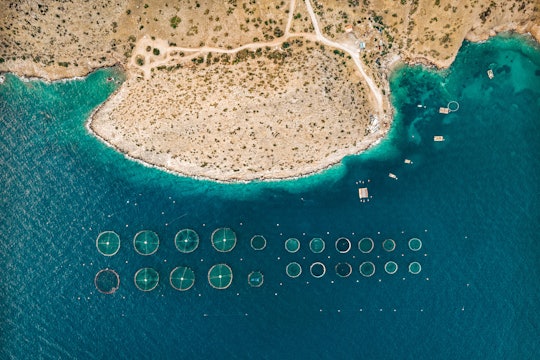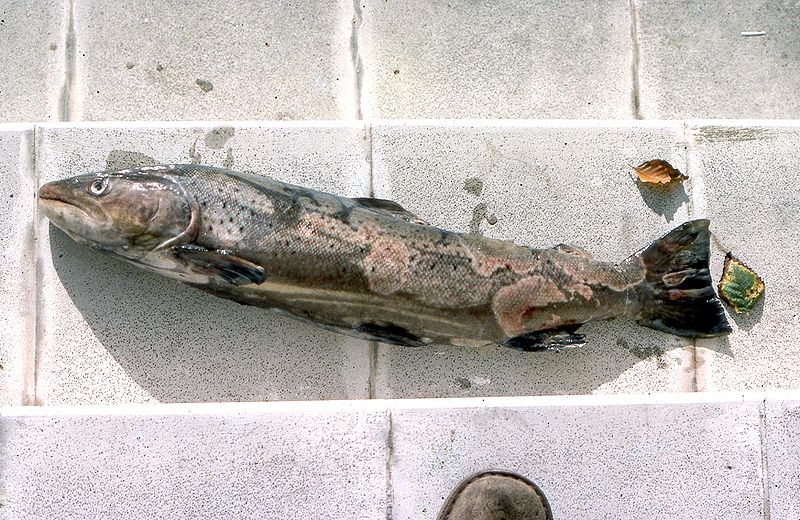
Photo by Alex Antoniadis on Unsplash
Antibiotics in fish farming create resistance and are an animal welfare disaster. It’s time for a change
Aquaculture, like agriculture, has an antibiotic problem
A new report has issued an urgent warning on the spread of drug resistance (anti-microbial resistance, AMR) from animal to human pathogens. It identifies aquaculture as a major source worldwide. Aquaculture (fish farming) is an under-appreciated source of AMR, and as global citizens we can no longer neglect its ecological and human impacts.
The challenge for the scientific and political community is to find a sustainable solution to the spread of AMR without compromising the economic security of fishing societies.
As with so many other health and environmental disasters, coastal communities in low- and middle-income countries in Africa and South Asia are facing the worst of this crisis. Rates of AMR in humans are skyrocketing in places that do not have the infrastructure or resources needed to monitor the spread of resistance in hospitals, a measure thought to be key in controlling AMR outbreaks.
We have been building to this moment for a long time. For decades, fishing communities have made heavy use of antibiotics to boost animal growth and to prevent disease outbreaks. Intensification of aquaculture has meant ever-increasing numbers of fish are kept in pens and ponds, in some cases devastating aquatic ecosystems. Take for example Saprolegnia parasitica, a fungal-like organism from the oomycete family. This species is naturally saprotrophic – it eats dead things, contributing to the carbon cycle. But when salmon are farmed intensively, packed together in crowded pools, S. parasitica becomes a deadly parasite, necrotizing the flesh of stressed animals and causing the disease Saprolegniasis.
From an animal welfare point of view, infections like these seem avoidable – the disease stems directly from animal over-crowding, so a simple solution would be to keep fewer fish together or give them more space. But this would reduce yields at a time when farmed fish are vital to feed our growing global human population. And it neglects the central role of aquaculture in supporting the economies of coastal communities, particularly in low- and middle-income countries.

A sea trout with Saprolegnia infection
Velela on Wikimedia Commons
Fish farming can be an economic boon, but it comes with risks. Vulnerability to climate change and local spread of AMR in human pathogens are directly correlated. There is even evidence that increasing water temperatures due to climate change increases the severity of some fish diseases, which will almost certainly lead to ever-greater reliance on antibiotics as the oceans continue to heat.
Of course, the global economic importance of aquaculture means that lots of well-funded research is going on, developing new drugs and vaccines to control pathogens and prevent infection. Farmed salmon have been vaccinated against furunculosis in Norway since the 1980s, where the use of antibiotics on fish farms is now minimal. Other northern European countries are looking at new offshore systems for fish farming that use recirculation aquaculture in indoor tanks to prevent runoff of pharmaceuticals into the wider ocean.
But such high-tech innovations are expensive, and out of the reach of many communities. Moving aquaculture away from the sea might also go against hundreds of years of local and family tradition, disrupting coastal communities.
More achievable changes come by integrating fish farming with other types of cultivation. Combining aquaculture with algae harvesting allows companies like Swedish Algae Factory to use nature to clean waste from fish tanks and absorb carbon dioxide. Algae are then harvested to produce new biomaterials and valuable cosmetic ingredients. A similar approach of growing fish and edible seaweed together in the same body of water has provided long term economic sustainability for farmers in Japan. Likewise in Bangladesh, cultivating fish and prawn directly in rice fields increases the productivity of all three crops.
Another solution to AMR, treating animals with traditional medicinal plants, is commonly used by farmers in parts of Vietnam and Indonesia. Probiotics (beneficial microbes) are another option. Shifting farming strategies away from antibiotic use requires time, investment, and short-term loss of productivity, but the results can be transformative, decreasing dependence on drugs and increasing income by diversifying the products that can be sold.
Solutions to the AMR-in-aquaculture crisis are within reach – but implementation must acknowledge the human aspect of aquaculture, and allow fishing communities to maintain productivity without becoming dependent on financial aid. Ongoing support from the United Nations is vital: this must include economic assistance, as well as ground-level support for infrastructure, education, and community leadership. Organizations like the International Fund for Agricultural Development are dedicated to helping build up resilience in rural food-producing communities. They offer financial help and education, and they encourage local leadership for sustainable management of fishing stocks and communities. Another key element will be to improve health monitoring programs, so that AMR in human infections can be tracked more effectively.
Most importantly, decision making must remain with the local communities. Historical research has shown that fishing communities around the world have been able to manage their fish stocks and fishing practices sustainably by following locally agreed-upon rules. Communication between the fishing community and local healthcare experts should also be emphasized, with careful and coordinated monitoring for disease in fish and humans.
This concerted effort will require global agreement on the importance of sustainability in aquaculture, to protect our environment and our health. Even those of us in the richest countries must hope for better leadership in the near future.



This topic is so important. Our continued use of antibiotics in agriculture and aquaculture not only has deleterious consequences to our own health, but is detrimental to environmental health. As you mentioned, aquaculture products are necessary for feeding our growing population. Unfortunately, by going for the easy, fast approach of throwing antibiotics at every problem we encounter in those systems, we are unintentionally creating a larger problem for ourselves as antibiotic resistant pathogens evolve in the wild.
I think you hit on a very important point: we need innovation that is affordable and feasible. I find the idea of growing algae really interesting. It almost takes an ecosystem-level approach to fish farming by integrating multiple species together to create a functioning environment. I would love to see innovations that make this sort of polyculture economically feasible so they can be implemented on a larger scale.